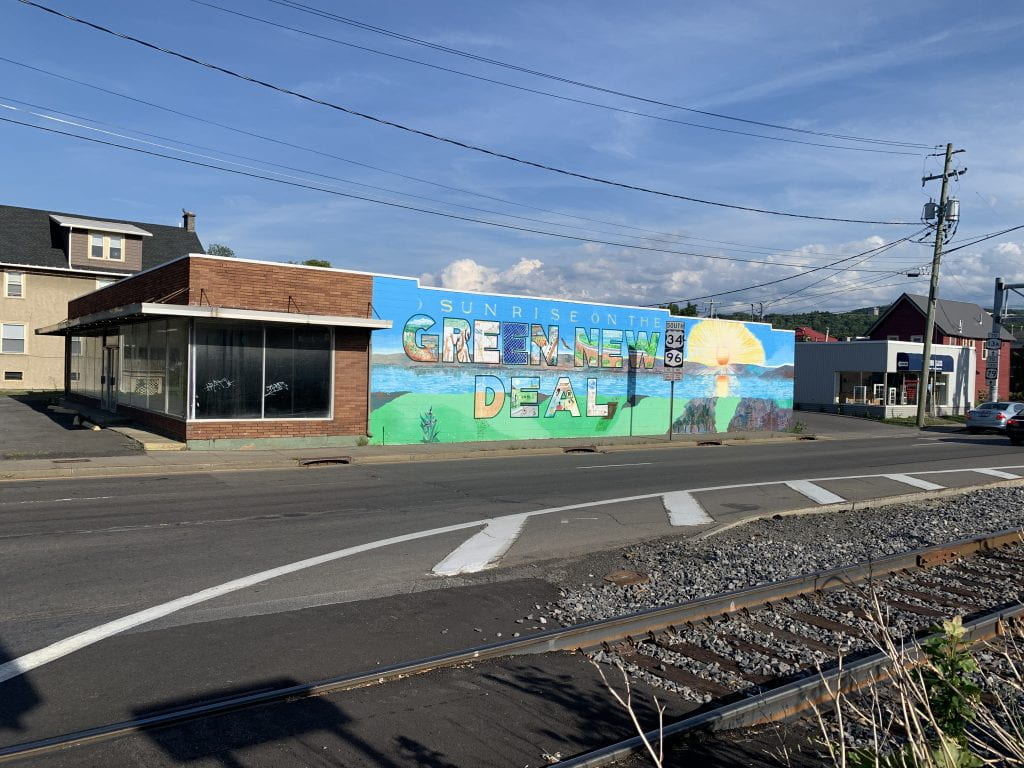← Back to Collaborative Research + Creative Action
Just Recovery: Equity Indicators for the Green New Deal
2020 – 2021

In conjunction with research in the Just Places Lab, students in CRP 5530: Land Use Planning Methods were involved in creating equity indicators for local Green New Deal resolutions adopted by the City of Ithaca and the Town of Ithaca. In Spring 2020, they met with Nick Goldsmith, the Sustainability Coordinator for the City and Town and Susan Holland, Director of Historic Ithaca,.
Each student was responsible for producing a memo that focused on a particular pillar or aspect of the local Green New Deal resolutions adopted by the City of Ithaca and the Town of Ithaca. These areas for research were:
1. Active Transportation (Bicycle and Pedestrian Systems)
2. Transportation - Transit
3. Buildings - New Construction
4. Existing Buildings (All building stock without historic regulations)
5. Historic Buildings and historic preservation 1
6. Energy sources
7. Carbon sequestration and carbon offsets
8. Resiliency, adaptation and emergency management
9. Waste management - including recycling, compost and trash and construction and demolition waste
10. Food systems
11. Art, Culture, ‘Intangible Heritage'
Students researched policy directions and equity indicators related to their selected pillar. They were instructed to focus particularly on “frontline and vulnerable communities defined as: “indigenous peoples, communities of color, migrant communities, deindustrialized communities, depopulated rural communities, the poor, low -income workers, women, the elderly, the unhoused, people with disabilities, and youth” and cross-cutting themes (workforce, financing, equity, health and wellness and education and outreach) and to consider how to track progress related to your pillar. They were also to consider the principles of collaboration, community engagement, regeneration – more than harm reduction, equity and inclusivity in their memo. They researched precedents from other cities for achieving Green New Deal goals in their selected area and specific equity indicators to track.
They used various sources of mapped indicators including the scenario planning tool UrbanFootprint and Equity Atlases for various metro areas. They were to write an approximately 4 -page (single-spaced) memo that outlines:
- Precedents for policies that relate the pillar area to Green New Deal from other communities;
- recommendations for the most important 3 -4 equity indicators (metrics) for tracking progress related to your selected pillar.
These are a selection of student drafted memos related to equity indicators.


